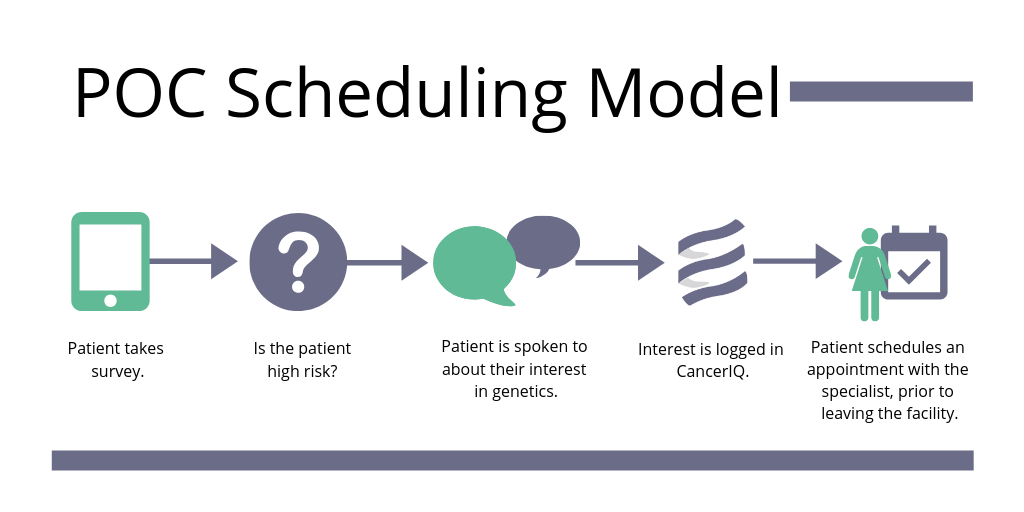At the ACCC 45th Annual Meeting & Cancer Center Business Summit in Washington D.C., Michele Settelmyer, APN, MSN shared how OSF Healthcare implemented its high-risk screening and genetic counseling program into its community setting.
As a National Accreditation Program for Breast Centers (NAPBC) accredited breast center that screens about 30,000 women per year, OSF Healthcare staff were tasked to find a solution that could overcome their key challenges as part of its quality efforts. These challenges included:
- Screening patients consistently
- Identifying all high-risk patients
- Improving patient access to genetic services
We'll use this post to go over OSF's success and share three key takeaways you can expect to bring back to your own health system:
1. How you can identify all high-risk patients
By using a simple tool that patients of all ages can complete on their own without disrupting workflow, you can identify all of your high-risk patients.
For example, OSF Healthcare implemented a cloud-based software solution that streamlined the risk evaluation process and automated the analysis of the patient’s risk using the latest recommended guidelines.
If you’re currently using paper in the cancer risk assessment process, you likely have someone who is hand-grading family history forms to identify which patients meet criteria. This process can be tedious and is prone to human error. As well, that person likely has to constantly check the latest updates to the guidelines, which is one of three signs you may need a cancer risk assessment software.
2. How you can scale genetic counseling services
By hiring a nurse practitioner and putting them through comprehensive genetics training, you can better scale your genetic services.
If your program is under pressure to keep patients moving through the appointment in a small amount of time, cancer risk assessment may be pushed aside. By combining the tech-enabled solution that helped identify all at-risk patients with bringing onboard a genetics-trained nurse practitioner, OSF Healthcare was able to flag high-risk patients in real time.
Having dedicated staff and a tool to help optimize workflow is critical to scaling a successful cancer risk assessment program. Here is one example of a simplified workflow for a point of care scheduling implementation model using software and a genetics-trained nurse.
3. How you can improve patient outcomes and generate downstream revenue
By using care management tools to follow up with patients over time, you improve patient outcomes and drive downstream revenue.
Once you implement your software solution to identify all patients and have scaled your genetic services, managing patient care plans over time is crucial realizing the incremental downstream revenue opportunities. In the case of breast centers and cancer centers, preventative services may include general patient visits, breast MRIs, increased number and frequency of screenings, and prophylactic surgeries.
Here is a similar story from the Advisory Board on how one cancer center improved access to genetic counseling, and saw 40 percent more patients and an increase on downstream revenue.

